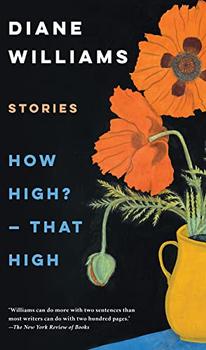Summary | Excerpt | Reviews | Beyond the Book | Read-Alikes | Genres & Themes | Author Bio

This article relates to How High? -- That High
 Hey, wait! Where are you going? This isn't going to be a long article. I promise!
Hey, wait! Where are you going? This isn't going to be a long article. I promise!
In fact, it may well be as short as a piece of flash fiction, which sounds like a creation for the age of Twitter, but actually goes much further back. At least as far back as around 600 BCE when many of the tales attributed to Aesop are believed to have originated.
These fables, as well as the myths found in the Iliad and the Odyssey and elsewhere, are short enough to give the reader pause. Just one line could take on new life in the mind, picking up where an author left off, a kind of calisthenics for the imagination.
In the 19th century, authors such as Honoré de Balzac, Anton Chekhov, Kate Chopin and Ambrose Bierce experimented with the form. One of Chopin's pieces, "The Story of an Hour," about a Mrs. Mallard reacting to the news of her husband's death, is not only considered her best-known short story, but also an early piece of flash fiction.
Somerset Maugham, Ray Bradbury and Arthur C. Clarke have tried it too. However, it didn't yet have the name we know it by today. The Best Short Shorts of 1932, an anthology, offered one possibility. In 1983, editor Robert Shapard asked writers who were going to be featured in another anthology to come up with a name for this style of story, which would be the title of the book. Writer Robert Kelly called it "sudden fiction," going on to say that these kinds of stories "are all suddenly – just there." Thus the anthology had a title and this type of fiction another name.
Shapard's co-editor of that anthology, James Thomas, along with two fellow editors, came up with a title for an anthology in 1992 that concretized the form: Flash Fiction Forward. Their definition was a story that would fit on two pages of a literary magazine. No more than that, and really no more needed.
In an essay from November 2005 for Writer's Digest, fiction writer Gina Ochsner quotes Angela Jane Fountas, a flash fiction writer who says that the form is a "poetic punch of small worlds." Later in the essay, she quotes Fountas again: "People don't read these because they want to get involved in a plot or learn more about themselves. They read them for the emotion or impression." These are stories stripped down to the bare emotional essentials.
Diane Williams, author of How High? -- That High has been called the "godmother of flash fiction" by the Paris Review. Other contemporary writers known for working in this genre include Lydia Davis, George Saunders and Jamaica Kincaid.
Hemingway is purported to have written what is perhaps the shortest piece of flash fiction, six words: "For sale, baby shoes never worn."
Filed under Books and Authors
![]() This "beyond the book article" relates to How High? -- That High. It originally ran in January 2022 and has been updated for the
September 2022 paperback edition.
Go to magazine.
This "beyond the book article" relates to How High? -- That High. It originally ran in January 2022 and has been updated for the
September 2022 paperback edition.
Go to magazine.
Your guide toexceptional books
BookBrowse seeks out and recommends the best in contemporary fiction and nonfiction—books that not only engage and entertain but also deepen our understanding of ourselves and the world around us.